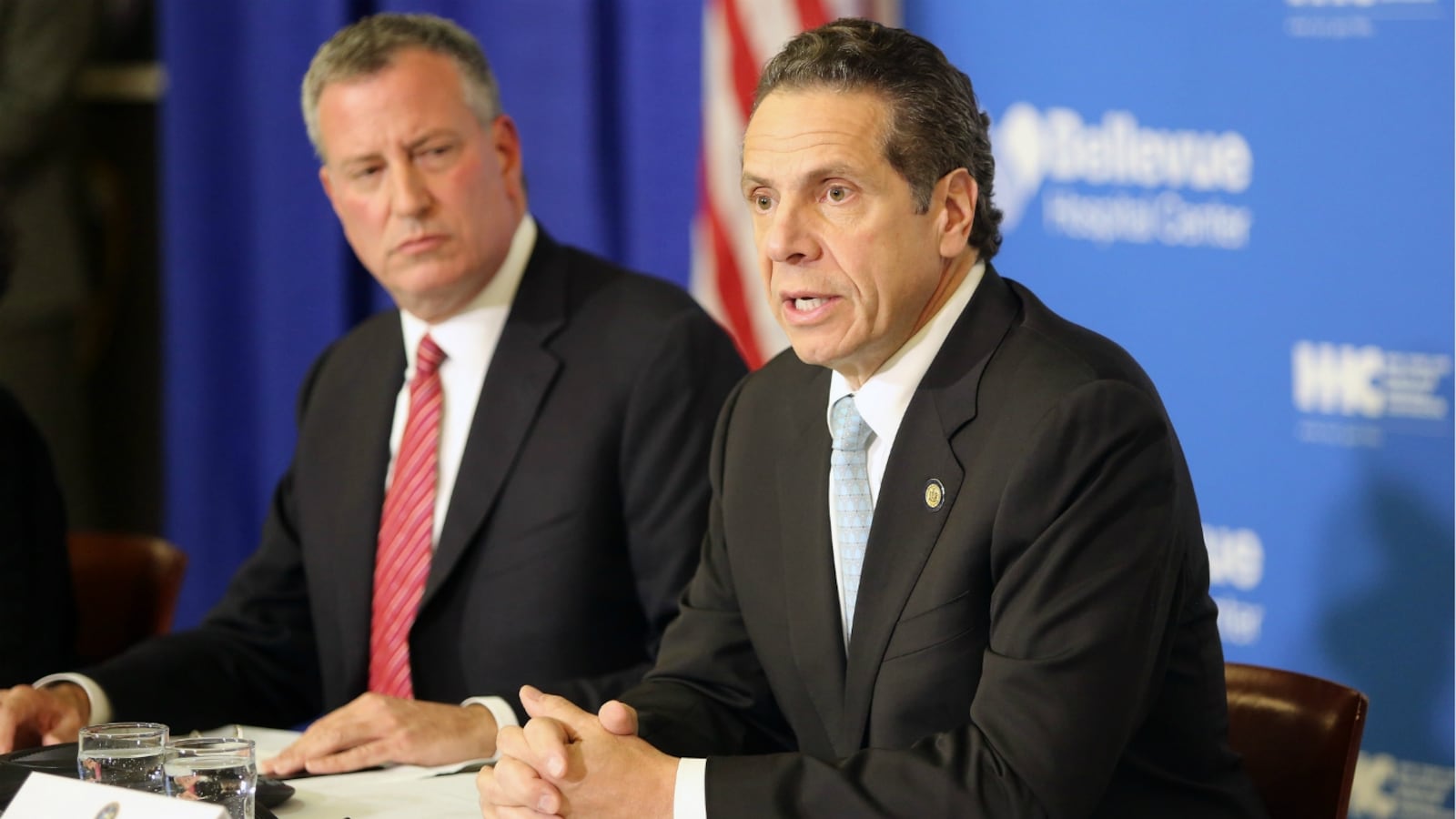New York lawmakers reached a budget deal Sunday that boosts education funding for school districts across the state by a billion dollars and extends mayoral control of city schools for three years — the longest extension since Mayor Bill de Blasio took office.
The $1 billion increase brings state spending on school aid to $27.9 billion, almost identical to last year’s increase. But, as in previous years, it was still substantially less than what lawmakers and the state’s Board of Regents requested.
The budget deal — often referred to as the “big ugly” — also included a slew of other policies that affect city schools, including mayoral control, tweaks to the city board that votes on school closures and contracts, and changes to local parent councils. Lawmakers were expected to vote on the deal Sunday.
Here’s what you should know.
A billion-dollar boost in school funding (same as last year)
Across the state, schools are set to receive just over a billion more dollars in state aid. In New York City, schools would receive roughly $11.3 billion dollars in school aid, up about 3.4 percent.
Gov. Andrew Cuomo touted the funding increases at a press conference Sunday, but many advocates had hoped for more significant increases this school year, especially given a wave of elections that gave Democrats control of the state Senate for the first time in years. Many of those newly elected progressives campaigned to significantly increase school spending.
The spending plan fell far short of the $2.1 billion requested by the Board of Regents, New York’s education policymakers. It also is shy of the $1.6 billion that the Senate and the Assembly wanted in new education spending.
“This budget fails to address the needs of students and their families,” wrote Jasmine Gripper, the legislative director for the Alliance for Quality Education, an advocacy group that has pushed for more school funding. “This time we cannot blame the Republicans. The reality is that the triple blue state leadership took the route of protecting millionaires over transforming educational opportunity in the state.”
De Blasio notches a win on mayoral control, but with some caveats
After campaigning aggressively to retain his control of the city’s schools, de Blasio won a three-year extension of mayoral control. It’s the longest renewal since he took office and will extend beyond the end of his final term.
In the past, Senate Republicans were only willing to negotiate one- or two-year extensions in exchange for concessions, such as on charter schools. But with Democrats in charge of the state Senate, attention focused away from charters and moved toward elevating parental input in city schools since some of the state’s newly elected Democrats criticized mayoral control as being too top-down.
In one example, the city’s Panel for Educational Policy, which has the power to approve contracts and sign off on school closures but is generally considered a rubber stamp for the mayor’s preferred policies, will add two members. The panel is being increased in size from 13 to 15, and one member would be elected by the presidents of local parent councils across the city.
The mayor will now appoint nine members instead of eight, so his power over the panel, which rarely breaks with his proposals, will not substantially change. (The deal would also require a new 10-day notice and written explanation for removing any panel members.)
In another change, members of the city’s 32 local parent councils would be chosen directly by parents who send their children to school in the district, instead of by parent associations. The councils would also “attempt to ensure membership that reflects a representative cross-section of the communities within the school district,” according to proposed legislation. Those changes wouldn’t take effect until 2021, and the details are not yet clear and would depend partly on a new task force’s recommendations.
Some observers said the changes are relatively modest. “The basic outlines of mayoral control haven’t been changed,” said David Bloomfield, an education professor at Brooklyn College and the CUNY Graduate Center.
More money for needy schools?
In Cuomo’s State of the State address, he proposed a plan that would have required school districts to direct a “significant portion” of their funding increases toward high-need and underfunded schools according to a new formula.
Sunday’s deal appears to have watered that idea down slightly, according to Bob Lowry, deputy director of the New York State Council of School Superintendents. Instead, districts are required to “prioritize” high-need schools for extra funding and submit a report to the state explaining its funding choices.
“It’s not as blunt as saying you have a formula,” Lowry said. “It doesn’t prescribe specific amounts by which districts would have to increase funding” at certain schools.
Cuomo’s original plan had prompted criticism from the state’s education commissioner and New York City Chancellor Richard Carranza, who said the formula would force the city to spend 75 percent of new dollars next year on just 22 percent of city schools. Many districts, including New York City, already spend more money at high-need schools.
No change to the charter cap
Earlier in March, New York City hit the cap on the number of charter schools that can open and the budget deal does not change that.
In the past, lawmakers have worked increases to the charter cap into the budget deal, but Senate Democrats are far less sympathetic to the charter sector, and their new majority in that chamber made a deal less likely.
Still, charter schools received a funding increase nearly identical to district schools — about 3.7 percent. “This budget is a big step toward equity in public school funding,” James Merriman, CEO of New York City’s Charter School Center, said in a statement. “We look forward to continuing to work with the legislature to address critical issues in NYC education, including lifting the arbitrary cap on NYC charter schools.”
Reema Amin contributed to this report.

